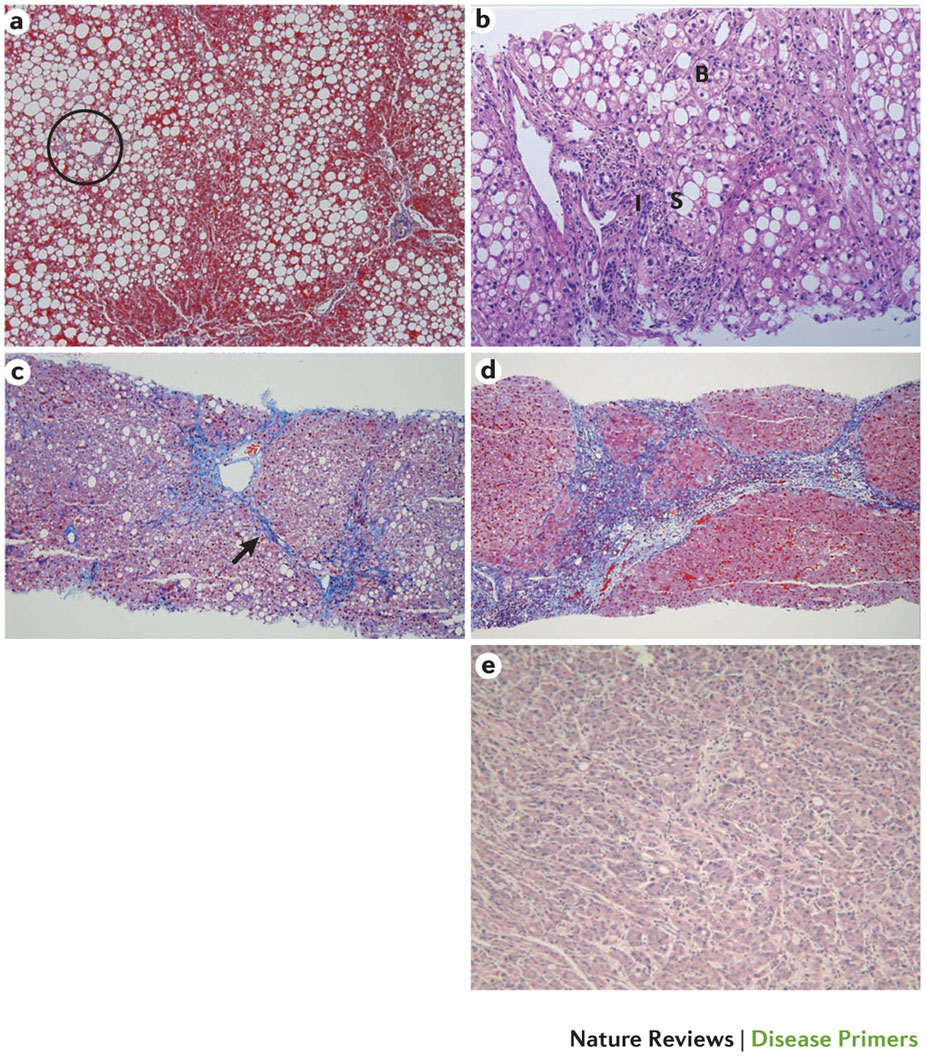非アルコール性脂肪性肝疾患
Nonalcoholic fatty liver disease
2015年12月17日 Nature Reviews Disease Primers Article number: 15080 (2015) doi: 10.1038/nrdp.2015.80

非アルコール性脂肪性肝疾患(NAFLD)は、脂肪が過剰に蓄積した肝細胞(非アルコール性脂肪肝〔NAFL〕)を特徴とする疾患である。約40%の患者には、門脈炎症と実質炎症および肝細胞傷害の所見が認められ、これらは非アルコール性脂肪肝炎〔NASH〕の特徴である。進行性線維症を発症する患者サブセットでは肝硬変に進行することもある。肝細胞がんと心血管合併症は、NAFLとNASHのいずれにも見られる生命を脅かす併存疾患である。NAFLDはインスリン抵抗性と密接に関連している;肥満とメタボリックシンドロ-ムはよく見られる基礎疾患である。その結果として、世界の成人におけるNAFLDの有病率は10~40%と推測されており、発展途上国では小児と思春期に最もよく見られる肝臓疾患になっている。腸内細菌の役割をはじめ、脂肪蓄積とそれに続く肝細胞傷害、免疫システムの役割および線維症などの機序に関する洞察が明らかにされている。さらに、患者によって大きく異なる疾病表現型、重症度および進行度には、遺伝的要因とエピジェネティックな要因の関与が考えられる。今のところ、生活習慣の改善、食事内容の適正化、またおそらくは減量手術を除いて、この疾患を完全に治療する効果的な医学的介入は存在しない。しかし、肝臓への脂肪酸の過剰供給、細胞傷害および炎症反応などの病態生理学的プロセスを標的にした、いくつかの戦略について現在研究が進められている。NAFLDの診断では画像診断法が確立されているが、NASH病変の検出では侵襲的肝生検がゴールドスタンダードになっている。生検に代わる、あるいはそれを補完する非侵襲的な戦略、特に追跡中のモニタリングに必要になる戦略についても、いくつか検討されている。
PrimeView
非アルコール性脂肪性肝疾患は、全身性インスリン抵抗性を基盤に発症し、脂肪肝から肝硬変まで多種多様である。このPrimeViewでは、BruntらのPrimerに従って、この疾患の原因と病態生理学についてとりまとめる。
本Primerの図解サマリー

